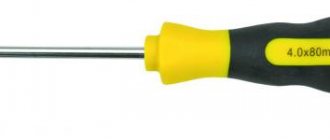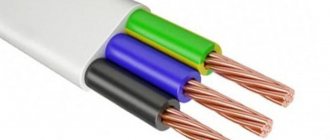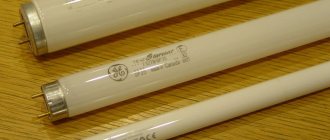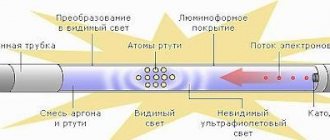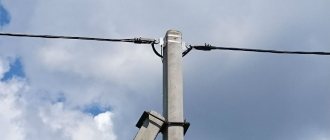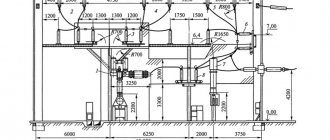Parameters of Phillips screwdrivers
Many craftsmen use automatic devices in their households. But this is just a technological trend of the times that will not replace the use of a conventional screwdriver, which requires mechanical action and some physical effort.
Without the help of tools, the screws cannot be tightened with sufficient force.
The popularity of Phillips screwdrivers is explained by their wide range of applications. They have a specialized designation in the form of a cross and the letters RN. They are considered indicators of the size of the tool. The minimum one is marked “000”. This means that with such a screwdriver you can screw fasteners up to 1.5 mm.
Approximate markings and their meanings:
- 00 - 1.5-1.9 mm;
- 0 - 2 mm;
- 1 - 2.1-3 mm;
- 2 - 3.1-5 mm;
- 3 - 5.1-7 mm;
- 4 - more than 7.1 mm.
developed the PZ slot.
The marking indicates not only the size of the tip, but also the thickness of the rod.
The length of the handle should be selected depending on the space in which the work will take place. So, if installation takes place in a narrow room, it is recommended to choose a model with a short handle. If it is difficult to get to the fastening point, you should choose a tool with a rod length of 300 mm.
The value of RN stands for the name. It happens that instruments are marked PZ, which stands for “Pozydrive”.
invented the PH slot
The tool with the latest marking has an additional beam that provides a stronger hold when fastening. It allows you to fasten cabinet furniture, drywall and aluminum profiles during assembly.
When choosing, consider the rod strength. By standards, it has an indicator of 47-52 units. If the number is less, the tip will bend, and if it is more, it will break.
For your information! Most often, the strength indicator is denoted by the letters Cr-V.
Quality and prices
For home use or infrequent use, an inexpensive but acceptable quality tool from Stayer, Fit, Matrix, costing about one hundred rubles, is suitable. If you are planning a professional activity, it is recommended to purchase a more expensive instrument. It is represented, for example, by the companies Kraftool, Arsenal, costing one hundred fifty to two hundred rubles. The most durable screwdrivers are produced by Gedoro. The cost of his models can exceed a thousand rubles.
What are the differences between a Phillips and a flathead screwdriver?
A Phillips screwdriver is the most popular tool for repairs.
Range and features of use:
- They vary in tip diameter.
- Suitable for most types of screws, screws and self-tapping screws.
- To facilitate operation, the tip of the tool is supplemented with a magnet.
Next, the specifics and features of using a flat or slotted screwdriver are discussed. The blade of a flat-head screwdriver is made of a narrow plate.
Previously, the majority of fasteners were made with a straight tip line. In this case, it is necessary to select a tip of the required length.
Today, such fasteners are used less frequently, and their installation is carried out only with the flat end of a screwdriver. Cross versions of the tool make it possible to install and detach shaped fasteners.
Magnetic models have a stronger tip
The tip of this screwdriver has a large number of projections, which allows for a tight grip on the parts being unscrewed. Cross models allow you to work with household items, wood and metal. Flathead screwdrivers are more used for fastening door handles, sockets and other small elements.
Features of using a flat-tip screwdriver:
- Suitable for screwing in and out screws.
- Used less frequently than the cross "colleague".
- The length of the tip is measured in millimeters.
Note! Screwdrivers also differ in the shape of the tip that is selected. It all depends on the purpose of use. In addition, the sizes of flathead and Phillips screwdrivers differ. The parameter is selected depending on the diameter of the screw.
You may be interested in this Rating of the best soldering stations
Star Bits (Torx)
Star-shaped nozzles are used in the mechanical engineering field and in the production of household appliances for tightening fasteners with the appropriate head shape. They are called Torx and are designated by the letters TX or T. Next to the letter is a number that indicates the size of the nozzle. It corresponds to the distance between the rays of a hexagonal star.
Torx was first used in 1967 by Textron in America. Today, different types of bits are used for this type of screwdriver. So, there is a vandal-proof version equipped with an internal hole. It is designated by the letters TR, which stands for Torx Tamper Resistant. Five-point bits called Torx Brigadier Pentahedron are also used.
Classic bit "Star" (Torx)
In European countries and the USA, the Torx nozzle is the most popular of all existing slot shapes. This is due to its high performance. This bit is distinguished by the presence of six edges, with the help of which contact with a screw or screw occurs.
The design feature of the nozzle improves adhesion to the surface of the fastener. Thanks to this, you do not need to exert much effort to create torque. The likelihood of the device slipping is also reduced, since the load is distributed across 6 edges at once. In turn, this reduces their wear. Consequently, the service life of the bit increases significantly. “Star” nozzles are available in different sizes. The most common models are from T8 to T40. However, there are also smaller bits.
Markings and dimensions of a slotted screwdriver
Branded tools have special markings printed on the end of the handle or on its flat part. For quality tools, the markings comply with generally accepted standards of the international classification of hand carpentry tools.
If a screwdriver is used at home, for example, it is used to tighten and unscrew screws or self-tapping screws, then it is marked:
- SL - this is the designation for a standard slotted flat-head screwdriver;
- PH - models with a cross tip;
- PZ - Phillips screwdrivers with notched thin rays.
The marking can also be made in the form of a circle with an image corresponding to the shape of the tip. For example, a stripe pattern is used to designate flat models; a Phillips screwdriver is indicated by a cross.
Information about the length of the rod and the size of the tip is also provided. For example, a round marking with a slot, the diameter of which is cut 1.5x7.5x135 mm, indicates that this is a flat-head screwdriver for working with fasteners with slots measuring 7.5x1.5 mm. The length of the handle is 13.5 cm.
Cross models have different markings. They are marked with the following designation: PH 2x90 mm. This means that the length of the shaft of the product is 90 mm, and 2 is the number of the diameter of the fittings head.
Table: slotted screwdriver sizes
| Screwdriver designation | Nominal diameter, mm | Working surface area, mm | Rod length mm | Handle length, mm | Handle diameter, mm | Rod diameter, mm |
| 0963 | 1.4–2.0 | 0.25 × 0.8 | 85 | 45 | 12 | 0.8 |
| 0964 | 2.5–3.0 | 0.4 × 1.6 | 1.6 | |||
| 0965 | 3.5 | 0.5 × 2.3 | 105 | 55 | 15 | 2.3 |
| 0966 | 4.0 | 0.6 × 2.8 | 155 | 80 | 18 | 2.8 |
| 0967 | 5.0 | 0.8 × 3.5 | 180 | 3.5 | ||
| 0968 | 6.0 | 1.0 × 4.5 | 215 | 90 | 22 | 4.5 |
| 0969 | 8.0 | 1.2 × 6.0 | 250 | 100 | 25 | 6.0 |
| 0971 | 10.0 | 1.6 × 8.0 | 8.0 | |||
| 0972 | 12.0–14.0 | 2.0 × 9.0 | 300 | 100 | 25 | 9.0 |
| 0973 | 16.0 | 2.5 × 11.0 | 11.0 | |||
| 0974 | 18.0–20.0 | 3.0 × 11.0 | 350 | 100 | 25 | 13.0 |
Marking bits for screwdrivers
As already noted, there are two commonly used types of bits - Ph and Pz. The first variety is universal. The apex angle is 55°. The most commonly used bit is Ph2.
The Pz attachment is more convenient, but it can only be used for self-tapping screws with notches. In addition to the four main diagonal ribs, it has four smaller ribs that increase the adhesion area with the self-tapping screw. The apex angle of such nozzles is 50°.
There are bits that replace flathead screwdrivers. They are marked as S or Sl. T-bits are used to mount the star section.
Types of rods
The rods are installed in various modifications to increase functionality. They are produced in non-standard sizes in length - elongated and shortened; the same deviations apply to the handle, which allows you to position the tool for rotation in difficult places. Most often used in combination screwdrivers and models with a flexible rod.
Combination type universal rods are found in combination or ratcheting screwdrivers. If the screwdriver has a faceted rod, then it is used to increase the lever force, namely another improvised tool, for example, pliers.
Screwdriver manufacturers
- Stanley is an American company with production in Thailand. A wide range of screwdrivers of fairly good quality.
- STAYER is a Russian company that produces budget instruments. It produces quite good screwdrivers in its price category.
- Wiha produces premium tools. Screwdrivers from this company are expensive, but high quality
- JONNESWAY is a Taiwanese manufacturer that produces very high quality screwdrivers
- Hama is a company from Germany, production in China. The products of this company are highly reliable
A high-quality screwdriver will last for many years if used correctly. You just have to follow a few simple rules: use a different screwdriver for each screw and do not use the screwdriver as a lever or chisel.
The figure shows the most common shapes of screwdriver blades.
.
.
table 1 (blade shape configuration)
| form value | screwdriver blade shape | marking | simple name | note |
| A | Flat screwdriver | SL | minus | The designation SL5.5 denotes the width of the blade; SL 0.5x4 (0.5 is the thickness of the blade (slot), and 4 is the width |
| B | crosshead screwdriver | PH | plus | The contact area with the workpiece is larger than that of the SL type |
| C | Cross with additional guides | PZ | posidrive | Large torque |
| D | Alternative to the Crusade | Torx | star | Mainly used in electronic instrument making and automotive industries |
| E | Subsequent development of Torx | Torx with pin | star with pin | |
| F | Imbus keys | Hex | hexagon | For tightening hexagon screws. The number is assigned according to the distance in millimeters between the opposite corners of the hexagon. |
| G | Screwdriver type Hex | Hex typical | Square | Rarely consumed variety |
| H | Not a standard slot. | Tri-Wing | Shamrock | For products with non-standard slots |
| I | Cross asymmetrical | Torq | Double prong fork | Powerful pull. Used in high-tech industries. |
| K | Double-pin screwdriver | SP | Spanner | It is used in household appliances and elevator mechanisms. |
Signs and symptoms of diseases
Crunching is one of the characteristic symptoms of various inflammatory and degenerative pathologies, as well as congenital anomalies of the musculoskeletal system. But not the main one. Therefore, at an appointment with a pediatric orthopedist, parents should describe all the signs of the disease that worry them, the frequency of occurrence, intensity, and relationship with any provoking factor. This will significantly speed up diagnosis and allow you to quickly begin treatment.
| Disease in infants, manifested by crunching in the joints | Characteristic clinical manifestations |
| Arthritis | Common signs for all types of arthritis are a gradual increase in pain, the formation of inflammatory edema over the affected joint, limited mobility, increased local and general temperature, decreased appetite |
| Rheumatism | Rheumatic fever is manifested by arthralgia, swelling, swelling, local redness of the skin, increased temperature, and a sharp limitation of movements of the affected joints |
| Hip dysplasia | Underdevelopment of the joint is indicated by shortening of the hip, asymmetrical arrangement of skin folds, and limited abduction of the hip. The most informative symptom of Marx-Ortolani slip is a click or crunch that occurs when the femoral head is reduced into the acetabulum. |
Electrician's screwdriver for vending machines
As for electricians, it is no secret for competent specialists who have been working in this field for a long time that bus bars, cross modules, automatic machines, relays and other equipment have special screw terminals Pz +/- or Ph +/-
Moreover, it was for electricians that manufacturers began to produce special screwdrivers with a Pz/fl or Pz/s profile for automatic machines.
And also Ph/fl or Ph/s - for busbars, starters, relays, etc.
The designation for this spline (Fl or S) is different because until recently, it was not standardized. So they called him whatever it was more convenient for him. Although the essence and form were the same.
Currently it is standardized only in France and the USA as Pz/sl and Ph/sl.
For sockets and light switches, in 90% of cases the first number is needed, and for modular machines, number 2 is required.
The screw clamps of such devices have not only the usual cross with notches characteristic of Pz, but also a wide slot for a flat-head screwdriver.
On the one hand, they are made this way so that even those who do not have the appropriate tool can tighten everything with a regular flat-head screwdriver. Or, when the working slot was already “killed,” you could at least unscrew the screw one last time, then pull out the wire and replace the machine.
But on the other hand, if you twist them with a simple Phillips Pz or a regular spline, then the bit will still slip at the last moment, without tightening the contact with the required force.
And the universal combination screwdriver Pz/Fl or Pz/Sl is just right! However, be careful when choosing manufacturers. There are a lot of negative reviews of such profiles on the Internet.
In them, the corner of the flat slot breaks off first. Especially in the first issue.
Using screwdrivers and bits with incorrectly selected fasteners leads to wear of both the screwdriver itself and the head of the screw or self-tapping screw.
In this case, the worst thing happens when they try to tighten the Ph profile with a Pz screwdriver. The contact of the edges in this case is minimal.
From the first revolutions, as soon as a significant load begins, you are guaranteed to break not only the fasteners, but also damage the edges of the bat itself.
Material characteristics and bit coating
An important component when choosing a particular bat is the material from which it is made, as well as the coating that can withstand various influences. On the construction market you can find bits from different manufacturers with a wide price range. The durability and ease of working with a bat depends on the grade of steel used for their production.
Probably the most common are bits with the steel marking Cr-v (chrome - vanadium), there are also bits made of chrome - molybdenum steel, etc. In addition to the steel composition itself, some bits are coated with a protective coating. Manufacturers are competing for consumers and more and more new technologies are being used in the production of bits. For example, a bit that has a nickel coating, on top of which a second chemical compound of tungsten carbide is applied, has increased corrosion resistance due to the nickel layer. And tungsten carbide, which is the outer shell, enhances the strength of the bit, which increases its service life even compared to a diamond-coated bit. There are bits with a titanium coating, which gives the bit increased hardness and corrosion resistance. Very often, especially in inexpensive sets, there are bits whose steel strength is highly questionable. Such a bit is usually enough to drive several screws, after which its edges are torn off and the bit becomes useless. A low price for a bat is not always an indicator of poor quality; on the construction market you can also find decent examples at fairly affordable prices. The permanent address of the article is https://stroimasterskaya.ru/articles/443
Show more articles from the category - Hand tools
Screwdriver profile Ph
The cross-head slot we are used to was invented back in the 30s. A few years later, the patent for this invention was bought by the enterprising Henry Phillips.
G. Phillips patent for Ph profile
This profile was named in his honor - Ph = Phillips. Just don't confuse the Philips company from the Netherlands (with one L) with the Phillips Screw Company founded in the USA.
We know the first one well from televisions, cassettes, high-quality lighting devices, etc. But the second one gave us variety in threaded fasteners.
At first glance, Ph is a simple cross, narrowed to the base and nothing more. It would seem that there is nothing to invent and patent here?
But this is not true at all. The Ph profile is made strictly at a certain angle of 55 degrees and with an inclination of the side surface of each face.
Thanks to this, if you start tightening screws or screws with extreme force, risking overtightening them, the bit or sting will simply pop out of the head of the screw or screw without damaging the fastener itself.
As you know, this was not done by accident. In this way, a certain tightening torque was achieved when using the tool on flow assemblies of the automotive industry and aircraft manufacturing in the USA.
Subsequently, with the invention of torque ratchets, screwdrivers and screwdrivers, as well as increased requirements for precise tightening torque, this began to work to the detriment.
In practical terms, this means that you don't have to mutilate the Ph bit if it starts popping out of the fastener. It turns out that the limit of the screw's tightening ability has been reached and there is no need to turn it any further.

